One of the highlights of the fiestas held in Mogán is that of San Antonio El Chico and San Antonio El Grande (Little Saint Anthony and Big Saint Anthony). The fiestas of San Antonio El Chico are held on June 13th, the feast day of Saint Anthony of Padua, patron saint of the municipality. Celebrations begin with a folk festival with a number of groups from Gran Canaria and other islands, as well as a traditional procession in which all the locals participate, with offerings to the saint of fruit and local products. For the rest of the week there are cultural displays and events, and the week ends with the procession of Saint Anthony through the town streets and the traditional Canto de los Pajaritos.
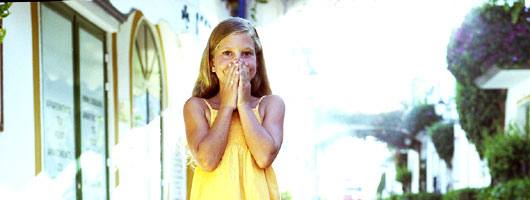
One of the highlights of the fiestas held in Mogán is that of San Antonio El Chico and San Antonio El Grande (Little Saint Anthony and Big Saint Anthony). The fiestas of San Antonio El Chico are held on June 13th, the feast day of Saint Anthony of Padua, patron saint of the municipality. Celebrations begin with a folk festival with a number of groups from Gran Canaria and other islands, as well as a traditional procession in which all the locals participate, with offerings to the saint of fruit and local products. For the rest of the week there are cultural displays and events, and the week ends with the procession of Saint Anthony through the town streets and the traditional Canto de los Pajaritos.
The native occupation of the municipality of Mogán first occurred in the terraces of the ravines and in the coastal areas. There were small settlements in the valley of Veneguera and in the Mogán basin, where they were more numerous, and in the adjoining valleys: Taurito, Tauro and Puerto Rico.
After the conquest and the arrival of new settlers in Gran Canaria, the land and water resources of the island were divided up. What is today the municipality of Mogán was initially included in the district of Telde, as this geographical zone extended to the southern limit of el Valle de La Aldea. The land corresponding to this municipality was characterised by lack of water and the poor connections with the rest of the island due to the great distance from the main economic and urban centres of the island. This meant that Mogán and the adjoining valleys were not preferential areas when the land was divided up and only the middle courses of the ravines of Tasarte, Veneguera and Mogán were occupied.
The coast was deserted as a settlement because of fear of the continuous attacks from pirate ships. Into the eighteenth century Mogán depended jurisdictionally on other municipalities such as Agüimes, San Bartolomé de Tirajana and Tejeda, which made it difficult for the municipality to develop an identity of its own. In addition to this there was the conflict that arose in the seventeenth century between agricultural and livestock farmers over the use of land, which further complicated the economic development of Mogán.
In 1815, with the help of Bishop Verdugo, Mogán became a new parish district, and this enabled it to achieve independence as a municipality. At the end of the nineteenth century the young municipality of Mogán, like the rest of the island, underwent a crisis, for the following reasons: the failure of land-based activities, disproportionate taxation pressure, lack of local administrative control and the inability of the country people to pay their debts with local moneylenders. However, this situation began to improve when an English company established the first crops of tomatoes and bananas, bringing both hope and new systems of cultivation that characterised the economy of the twentieth century.
Mogán is located in the southwest of Gran Canaria 93 kilometres from the capital of the island. It has a surface area of 172.44 square kilometres, which makes it the second largest municipality in terms of size in the island. It is 22 metres above sea level, with the interior of the municipality attaining a higher altitude in la Montaña de Sándara (1,583 metres).
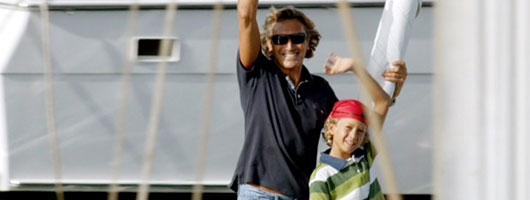
In the east it borders with the municipality of San Bartolomé de Tirajana, following the course of the ravine Barranco de Arguineguín from the dam Embalse de Soria. In the north it borders with Tejeda and descends in the western zone down the Barranco de Los Secos to the municipality of La Aldea. The coastal area of Mogán is made up almost entirely of cliffs, but there are several beaches where the ravines of the municipality reach the sea.
It is an area of former volcanic activity, made up of basaltic rocks. The landscape of Mogán is characterised by wide slopes interspersed with deep ravines starting in the interior of the island and extending down to the sea. The most spectacular of these are el Barranco de Veneguera and el Barranco de Mogán, the site of the capital of the municipality and the area with one of the most beautiful landscapes.
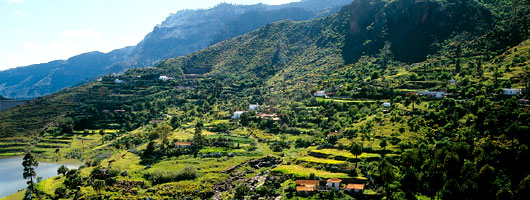
The permanently sunny climate of Mogán is responsible for the arid nature of the interior of the municipality. On the coast, this same climate makes the municipality an ideal place for convalescence from rheumatic illnesses and similar complaints, as the World Health Organisation has stated. Rainfall is very limited, although in winter it is not unusual to find streams and spectacular waterfalls. This is why Mogán has the largest dam in the island: la Presa de Soria.
The vegetation of Mogán is made up primarily of spurge plants (Canary Islands and balsam spurge), which are endemic to the island, although the municipality also has green peak areas with a major extension of Canary Island pine forest, palm oases and exotic fruit trees.
At the end of the eighteenth century and the beginning of the nineteenth, the economy of the valley of Mogán was based on agriculture. This was complemented by other activities such as livestock raising, forestry and the collecting of cochineal, although it was primarily a closed, subsistence economy.
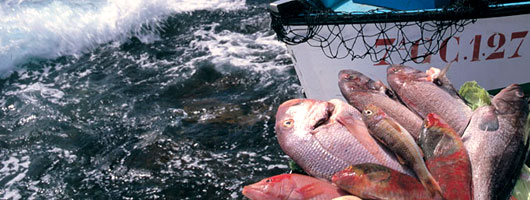
In the twentieth century agriculture and fishing continued to be the primary economic bases of the municipality, although these are now complemented by tourism, a more recent activity in the south of the island. The fertile lands of Mogán produce a large variety of tropical fruit such as avocadoes, mangos, papayas, guavas and custard apples. These crops have begun to take over from the traditional island export products (the tomato and the banana) in the area of Veneguera.
In the port known as Puerto de Mogán the main activity is fishing, primarily to supply restaurants in the area. The catches of marlin, shark and tuna are renowned throughout the island.
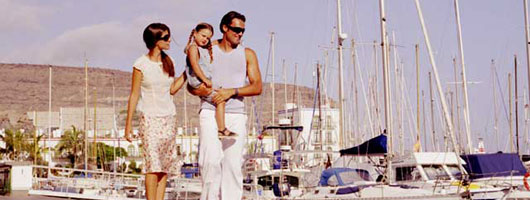
The most recent activity in the area though is tourism and its related services. A major infrastructure with hotels and apartments of different categories, shopping centres, beaches and marinas, as well as a wide range of leisure activities, have made this one of the busiest municipalities in the hotel and restaurant industry.